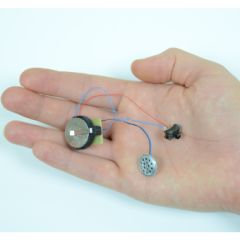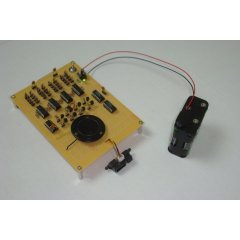Categories
- animatronics (12)
- apple (11)
- arduino (179)
- art (41)
- articles (121)
- artificial intelligence (11)
- automation (421)
- avr (205)
- bitcoin (3)
- breadboard (9)
- cameras (57)
- cars (26)
- cell phones (28)
- clothing mods (21)
- console mods (26)
- dangerous (94)
- desktop mods (24)
- embedded (5)
- flying things (54)
- fpga (22)
- gaming creations (108)
- interface (225)
- internet (17)
- laptop mods (6)
- lasers (22)
- linux (7)
- magnetic (3)
- medical (12)
- microcontrollers (51)
- misc projects (152)
- msp (12)
- music (124)
- pic (90)
- projects (23)
- pyroedu (76)
- raspberry pi (26)
- robots (312)
- security (36)
- sensors (307)
- software (200)
- solar (19)
- stamp (9)
- tools (149)
- tutorials (98)
- Uncategorized (45)
- usb (44)
- wireless (256)
Sponsors


Posted May 8, 2013 by Chris
“I generally get project ideas before looking for components. For the whistled, things were the other way around.
A few months ago, when finding a new 32pins Cortex M4 , I got plenty of ideas and the whistled was one of them.
As mentioned in the video, this tiny Kinetis K10 can perform around 80 [q15 2048 points] FFTs per second and still give me time to run my own algos.”

Posted March 31, 2013 by Chris
“When I first saw Crispin Jones Tengu, I was sure, I must have one. If you don’t know tengu and don’t want to follow the link, it’s a small face, made of LEDs, that reacts to music and sound.
It did not take long until I decided to clone this funny little device. All it needs is a microcontroller, an LED matrix and a sound sensor.”

Posted March 29, 2013 by Chris
“The idea is to design and construct an electronic musical keyboard with some functions, effects etc,. This is my old school project and I remade and modified it. There are many hobbyist’s musical keyboard circuits around the net. Most design are based on 555 or some oscillator circuits. The limitation of these design are that this circuit generates only one tone at a time.”

Posted March 18, 2013 by Chris
“For the MIDI lab, I decided to try out a beam-break detection system I had been wondering about for awhile. Creating an invisible string that could be plucked seemed to be a perfect applicaiton for MIDI.”

Posted February 28, 2013 by Chris
“In this article we will take a look at the original, The Annoy, project, and see what we can do to improve it. Specifically, we’ll make a PCB for the project and find the smallest PIC package available (10F202) for it making it as small as possible. Additionally, we’ll switch over and use microchip’s new XC8 compiler so we don’t have to use assembly for programming.”

Posted January 15, 2013 by Chris
“The META-EWI is a modified EWI (Akai’s Electric Wind Instrument) to which was added a whole new set of controllers based on sensor technologies, specifically eight continuous controllers and 16 digital switches. These clearly succeed at stretching the expressiveness and the range of musical gestures found on the original instrument allowing the musician to have a more complete and far reaching control of a great variety of meaningful musical parameters.”

Posted January 14, 2013 by Chris
“Doing some initial research on automatic door knockers, I came across an excellent post describing a secret knock-detecting door. This looked like a perfect starting point, so I decided to recreate it with my own hardware. To simplify input and output, I started with a simple button for input and an LED for output. I took the code provided and modified it so that it replayed rather than validating the recorded knock pattern.”

Posted December 30, 2012 by Chris
“An embroidered fabric speaker made into a pillow. Inside the pillow a amplification module hacked from a commercial device lets you easily connect your mp3 player to play back your favorite music. While the speaker might not be as loud as commercial speakers, you can very comfortably lay your head down on it to rest.”

Posted December 11, 2012 by Chris
“In this article, we will explore how to translate analog voltages from an IR proximity sensor into digital information that we can use to determine distance away from an object. Depending on how far away the object is, a different tone can be heard.”

Posted December 8, 2012 by Chris
“My idea was to use an oscilloscope as the video output device to show some vector graphics, and create a mod player to provide the audio. The video part of the project had some design flaws and terrible noise in the DACs so I never really finished that part. Also, the audio part was much more fun. The modplayer was built using an ATmega325, a 4MBit flash memory and an op-amp to amplify the audio.”







